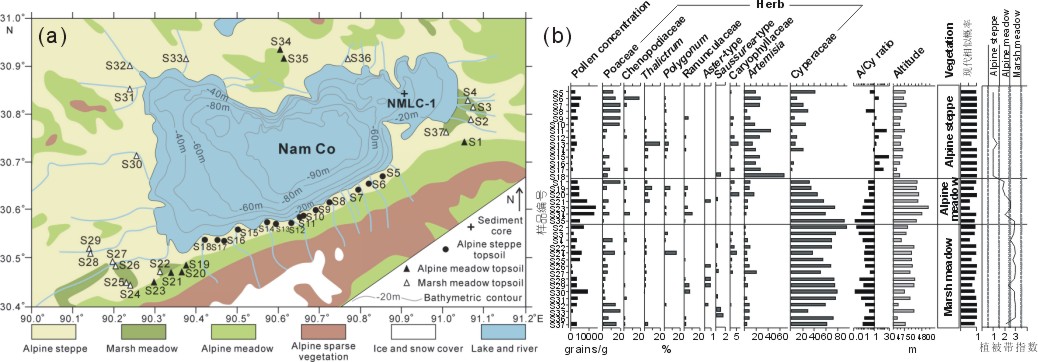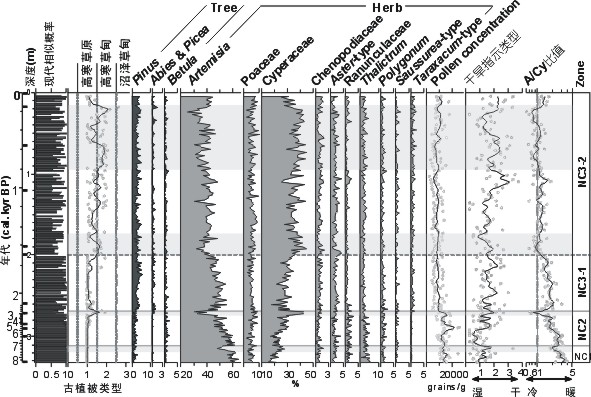Ph.D. student LI Quan and his teacher LU Houyuan investigate fossil pollen from Nam Co and modern pollen from altitudinal vegetation belts around the lake to reveal alpine vegetation succession in response to climate changes during the Holocene in the central Tibetan Plateau.
The discriminant analysis on 37 topsoil samples shows that pollen samples from alpine steppe at lower elevations (<4800 m) and alpine meadow on upper slopes (4800–5200 m) can be distinguished by their pollen assemblages.
Their result indicates that the pollen ratio of Artemisia to Cyperaceae (A/Cy) can be used as an indicator of the vertical shift of vegetation belts and temperature changes in the central Tibetan Plateau as suggested by previous studies.
A history of the vertical shift of vegetation belts on the northern slope of Nyainqentanglha Mountains and climate changes since 8.4 kyr BP are thus recovered by 198 fossil pollen assemblages from a 332 cm core of Nam Co. Paleovegetation reconstructed from fossil pollen assemblages through discriminant analysis shows a general downward shift of altitudinal vegetation belts, suggesting a decline in the temperature trend since 8.4 kyr BP.
This result is consistent with the reduction of A/Cy ratios. The fossil pollen record also reveals warm and wet climate during the early to mid Holocene, and cold and dry conditions during the late Holocene in the Nam Co area. A comparison of Holocene climatic reconstructions across the Plateau indicates that termination of maximum moisture at around 6–5.5 kyr BP in their record is associated with the southeastward retreat of the Southwest Monsoon.

Fig.1 (a) vegetation map of Nam Co area, and locations of topsoil samples and core NMLC-1. (b) Pollen percentage diagram of topsoil samples from Nam Co area, with altitudes of sampling sites and results of discriminant analysis. (Image by LI)

Fig.2 Pollen spectra of core NMLC-1 and paleovegetation reconstruction based on discriminant analysis. (Image by LI)
Li et al. Pollen-inferred climate changes and vertical shifts of alpine vegetation belts on the northern slope of the Nyainqentanglha Mountains (central Tibetan Plateau) since 8.4 kyr BP. The Holocene. 2011, 21: 939-950 (Download Here)